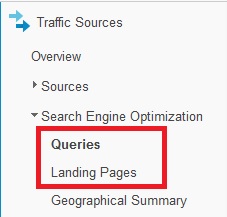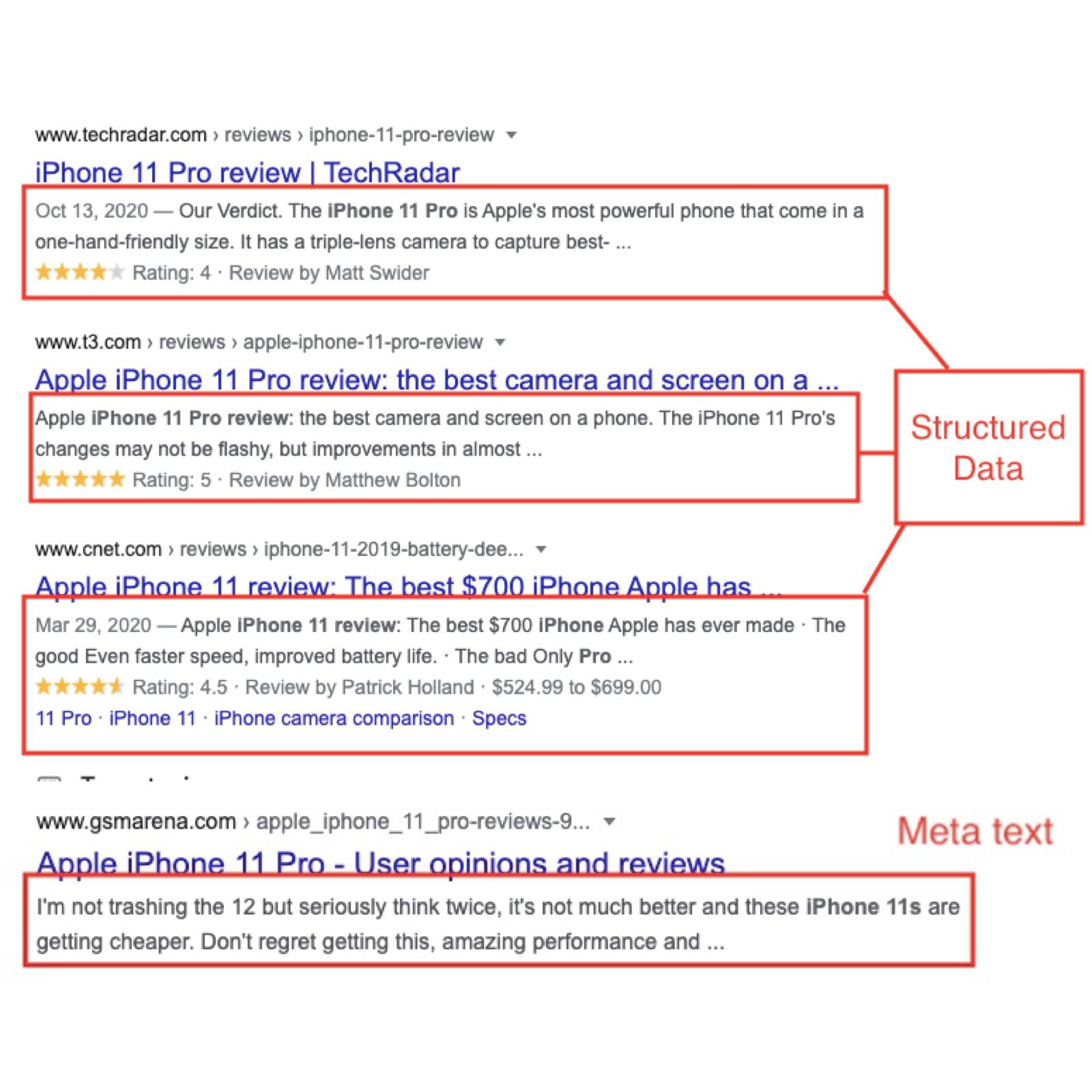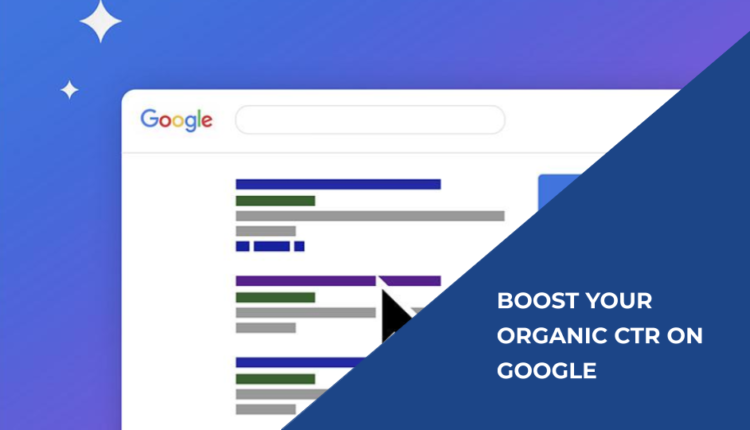With a lot of effort, you have reached the first page of Google’s Search Results, but you don’t get the number of clicks you would like, and you don’t understand why? You must bear in mind that positioning your website on the first page doesn’t mean much if you do not get your desired clicks afterward.
So, what you need to do now, is Improve your Click Through Rate, which will allow you not only to keep your position on the Google SERP but climb higher and higher the more clicks you get.
In this article, we will provide you with tips and useful information on how to boost your CTR on Google and achieve just that.
What is an organic CTR?
Clickthrough rate is a term that refers to the percentage of users that click on your ad or website, depending on the situation. So, basically, there are two types of clickthrough rates/ One, paid clickthrough rates that come from visitors who click on ads. The second, and our topic of the day, organic clickthrough rate, which represents the total amount of clicks your website gets from search engine results, divided by impressions.
The formula, in this case, is Organic clicks/impressions = Organic CTR, whereas paid CTR is the Total measured clicks/Total measured Ad impressions= CTR.
However, easy results are no longer obtained on Google search results pages ( SERP ). There are many factors that affect the website’s position in search result pages and one of these factors is the clickthrough rate.
In simple terms, yes, SEO efforts on the website will push you higher on SERPS and can directly and positively affect your traffic. But, no matter how good of a quality your website is, it is difficult to actually convince people to click on your links, if it is not managed properly.
Luckily, a wider audience can be reached by increasing your organic clicks. Now, that we discussed organic CTR, let’s peek into why is it so important.
Why does organic CTR matter?
In order to rank higher on Google, we need to understand how the ranking algorithm works. One of the most important factors in ranking websites is the organic clickthrough rate. And, in order to get a better ranking on search engine result pages (SERP) and to create a boost our website’s visibility, we need to focus on organic clicks.
Boosting out organic CTR will also help increase the revenues from products and services and allow us to reach more people in the target audience. Needless to say, organic traffic is will result in an increase in our brand awareness and help build our brand image.
So, CTR has a very important place in achieving goals in the digital world. The main purpose of websites is to attract the target audience and direct them into action, so we can reach our goals. The next question now is how to increase our organic CTR?
How to increase organic CTR?
Search engines like Google put a lot of weight on user experience when ranking a website. So, if a website wants users to perceive them as an important, reliable platform, they need to pay attention to their users. This creates a cycle, the happier the users, the more time and money they will spend on your site. The more activity, the lower your bounce rates, and the higher your authority rank. Finally, the higher your authority rank, the more traffic through organic clickthrough rates.
Here are the following tips on how to increase organic CTR.
1. By improving your content performance
One way to boost the clickthrough rate of your site is to track your keywords clickthrough rate from organic traffic. In other words, find which keywords or content perform best, and use that in the future to attract more users.
You can track this data in your Google Analytics account, which must be linked to Google Webmaster Tools.

The data we will be interested in is in the section Traffic Sources and Search Engine Optimization. Here we choose either Query (keywords from which users came to your site) or Landing Pages (URLs that were displayed to them after clicking).
2. Fixing your keyword cannibalization
Keyword cannibalism means that you have different blog posts or articles on your site that could be included in the same Google search query. If you optimize posts or articles for similar search queries, they kill each other’s chances of being ranked.
This is because Google will only return one or two results from the same domain for each particular query. Even if you have a high authority domain, you can maybe achieve 3.
By cannibalizing your own keywords, we mean that you’re competing with yourself to be ranked in Google. For example, if you have two posts on the same topic, Google cannot tell which article would have the highest rank. So as a result, both are likely to be listed as mediocre and pushed down the list.
However, keyword cannibalism can also occur if you optimize posts for keywords that aren’t exactly the same, but almost the same when the posts have a slightly different angle, but they are still very similar.
2.1. How to fix it?
You can help Google figure out which article is most important by creating a decent internal linking structure. This means that you should link from less important posts to the posts that are most important to you. Then, Google (using these links) can figure which ones you want to rank higher on search engines.
Your internal link structure could solve some of your keyword cannibalism issues. You should think about which article is most important to you and link it to less important articles.
3. Get creative with the headlines
The headline is like a directional arrow.
The secret to creating headlines is as simple as life itself. Or as simple as you can make it. These are just three simple steps that will guarantee the interest of your potential readers or clients:
- Get to the point fast
- Use keywords
- There are certain formulas
3.1. Get to the point
Assuming you’re not a blogger full of humor and tremendous creativity, it can seem complicated. The emphasis is on the word can. You can create headings very similarly. You need to put a little taste in it. Just like an appetizer, what will follow the title. Something very specific. As if to say in one word the essence of the whole text.
3.2. Use keywords
Keywords are great for building for SEO. But don’t overdo it. Here, too, less is more. dare say twice. Google doesn’t like a lot of keywords together. It can then give penalties in the form that it will not show your post as often as it deserves.
3.3. There are certain formulas
Just as there are patterns of behavior for humans and animals, there are certain patterns for creating headlines. You may think that you are not a creative type of writer. I guarantee you that you are creative enough to be able to make headlines with ease.
Writing is an art that can be learned. There are several options for the simple and efficient creation of headings. For a start, it will be enough to enter your topic in this pattern and fill in the data in parentheses.
Here are just a few tips for creating headlines. I believe that this will make it much easier for you:
- How to (something) in (number – number) steps
Example: How to create a title in 3 steps
- Do you want to boost your website (where exactly, or in what exactly)? Here’s how.
Example: Do you want to boost your website in Google rank? Here are the exact instructions…
- Quick and simple: (what exactly) has never been easier
Example: Quick and easy: Making a catchy title has never been easier
- Everything you wanted to know about (what exactly)
Example: Everything you wanted to know about SEO
Get emotional when writing, do not be afraid to use intensive words like the best, top, perfect, ultimate. It is proven that those emotional words higher up the chances of your CTR.
The same goes for negative or positive sentiment, even WordPress gives you the hint to use one of those to increase the SEO of the article.
Nonetheless, do not forget to test your headlines.
4. The load time matters
It’s logical that people got comfortable nowadays with the rapid loading speed of websites. This is an essential factor to bear in mind once the click counts after the visitor landed on your site.
Everyone dislikes a slow load time and rather leaves the page than to wait a lifetime. Slow load time is also caused by page size. You can read the tips on how to effectively reduce the page size.
4.1. Let your content meet with featured snippets
In 2014, there was one significant change in Google Search: featured snippets, which provide a quick response or summary with a snippet of relevant site content, began to appear in the SERP.
What does the selected snippet contain?
The selected snippet appears in a special box at the top of the search results:
- information quoted from a third party website
- link to the page,
- page title
- URL of the page.
What form can the content in the selected snippets take?
- Paragraph

- Numerical list

- Bulleted list

- A table

How selected snippets affect CTR
If your content is placed on the first page of search results for a search query that triggers the display of the selected snippet, there’s a good chance of getting to that snippet and thus to the top position. The higher your content is placed, the more likely it is to get to the selected snippet.
Fewer clicks? Depending on when…
Many SEO experts believe that selected snippets reduce the number of clicks on standard search results. If you find the answer to your question directly in the SERP, why would you click on the next result? While this works for some search queries, it’s certainly not for all. The decisive factor is whether the answer provided by Google in the selected snippet will be satisfactory enough for the user.
Meta description
Although Google claims the Meta text will not help you to rank higher, it may be used as a promo for the visitor to click on your website.
Meta descriptions and page titles are very important for attracting visitors to websites. They also provide meta description and page title information about indexing to search engines.

Keyword-containing titles and meta descriptions get a more efficient ranking. When people see the content they are interested in in the title and meta description, they will be more likely to enter websites. For this, the careful creation of tags, meta descriptions, and page titles for each content will be effective in increasing the click-through rate in a short time.
Opt for structured data
Structured data appears below Google search results and is the text that talks about the content of a subpage. If you do SEO, structured data is an opportunity for you to attract customers and it will help you differentiate yourself from other search results.
Difference between meta description and structured data
The first three search results in this illustrative image represent structured data that provide the user with reviews and ratings of the iPhone 11 pro.

Which result caught your attention more? The one which contains the word “best”? Structured data is also about to attract the user’s attention, but it also helps with SEO positions. The illustration shows that web pages with structured data appeared higher in the search.
If Google understands the content of your site, it may create structured data that contains detailed information for your customers. If you are writing a blog, your photo may appear below the result. There are several types of structured data, but the most used are authorship/people, places, events, products, music, reviews/ratings, software applications, videos, organizations.
Conclusion
32% of clicks in Google search results occur on the first page. In addition, the rate of clicks on the first three pages increases by 80%. It would be good to go up on the results pages to increase organic clicks.
One of the SEO studies for the website is in-site links. The more pages visitors visit the website, the higher the organic click-through rate. Therefore, quality in-site links can be created on the website.
So, make sure you fully comprehend the differences between an organic and paid CTR. Also, try to follow the SEO rules. SEO is an important item for ranking in Google search results and it consists of hundreds of different factors. If you follow these factors correctly, you can increase organic traffic. One of the most important factors in SEO in recent years is user experience.
When a user visits your site, they should be comfortable and easily accessible. So take user experience into account. With the increase in the use of mobile devices, the importance of mobile searches and mobile sites has also emerged. If your website is not mobile-friendly and difficult to use, after a while you will be unable to receive organic traffic.
The importance of site speed has emerged with the Google algorithm updates. If your site is opening slowly, users will leave the site after a while and create negativity. Therefore, pay attention to site speed.
You should consider all the above items as a whole. This whole set of processes takes time and patience. If you take patience and time, you can see organic traffic growth and enjoy your success.

Comments are closed.